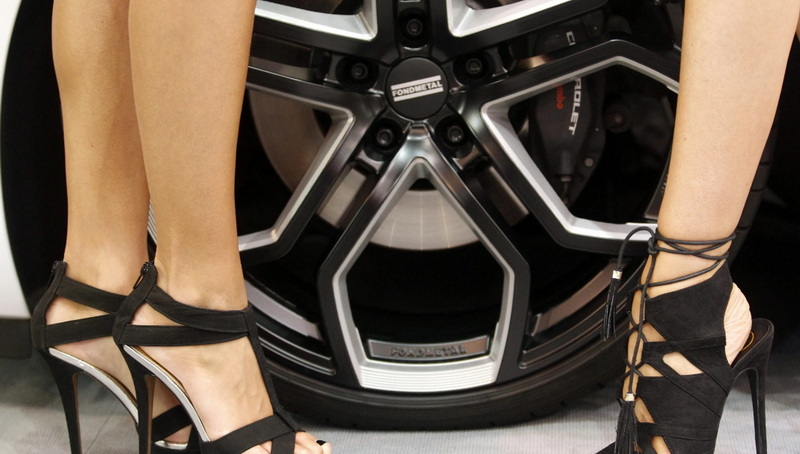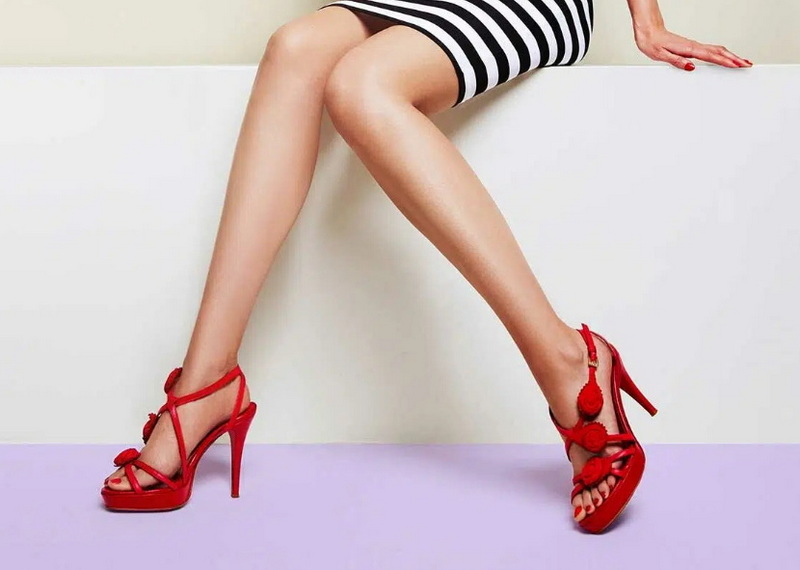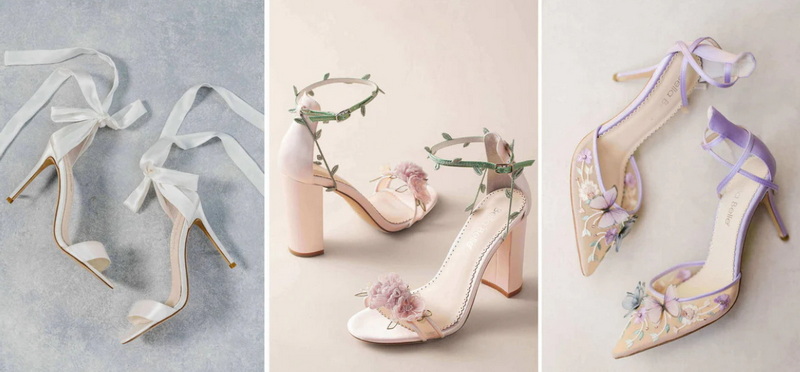Content Menu
● The Evolution of High Heels
● Current Trends in High Heel Wear
>> Comfort-Driven Fashion
>> Workplace Culture Changes
● The High Heel Market in 2024
>> Popular Heel Styles in 2024
● Health Considerations
● Cultural Significance
>> Special Occasions
>> Fashion Statements
>> Empowerment Symbol
● The Rise of Comfortable Alternatives
● The Impact of Social Media and Influencers
● Sustainability in Heel Production
● The Future of High Heels
● Conclusion
● FAQ
>> 1. Are high heels becoming less popular?
>> 2. What are the health risks associated with wearing high heels?
>> 3. What are some comfortable alternatives to traditional high heels?
>> 4. How has workplace culture affected high heel wear?
>> 5. What is the future of high heels in fashion?
● Citations:
High heels have long been a symbol of femininity, elegance, and power in women's fashion. However, in recent years, there has been much debate about their continued popularity and relevance. This article explores the current state of high heel wear among women, examining trends, health concerns, and cultural shifts that have influenced their usage.

The Evolution of High Heels
High heels have a rich history dating back centuries. Originally worn by both men and women as a symbol of status, they have evolved to become primarily associated with women's fashion. In the early 20th century, high heels became a staple of women's wardrobes, symbolizing sophistication and glamour.
Current Trends in High Heel Wear
Recent data suggests a decline in daily high heel usage. According to a survey, only about 20% of women wear high heels, with approximately 10% wearing them daily[1]. This decrease can be attributed to various factors, including changing fashion trends, increased focus on comfort, and workplace culture shifts.
Comfort-Driven Fashion
The fashion industry has responded to women's desire for more comfortable footwear options. Kitten heels, block heels, and platforms have gained popularity as alternatives to traditional stilettos. These styles offer height and style without compromising on comfort.
Workplace Culture Changes
Many workplaces have relaxed their dress codes, allowing for more casual and comfortable footwear options. This shift has contributed to a decrease in daily high heel wear among professional women.
The High Heel Market in 2024
Despite the decline in daily wear, the high heel market remains significant. According to a market report, the global Women's High Heel Shoes market size is projected to reach USD 39,514.2 million in 2024, with an expected growth to USD 50,273.09 million by 2031[2].
Popular Heel Styles in 2024
1. Block Heels: Offering stability and comfort
2. Pointed-Toe Boots: Combining elegance with practicality
3. Slingbacks: A versatile option for various occasions
4. Sculptural Shapes: Artistic designs for fashion-forward looks
5. Platform Heels: Providing height with added comfort
Health Considerations
While high heels remain popular, there's increased awareness of their potential health risks. Prolonged wear can lead to:
- Shortening of calf muscles
- Thickening of the Achilles tendon
- Ankle instability
- Increased pressure on the ball of the foot
- Altered body mechanics affecting knees, hips, and lower back

Cultural Significance
High heels continue to hold cultural significance in many settings:
Special Occasions
High heels remain a popular choice for formal events, weddings, and other special occasions where elegance and glamour are desired.
Fashion Statements
In the fashion industry, high heels are still prominent on runways and in editorial shoots, showcasing their enduring appeal as a style statement.
Empowerment Symbol
For some women, wearing high heels is associated with feelings of confidence and empowerment, despite the shift towards more comfortable options.
The Rise of Comfortable Alternatives
As women prioritize comfort, several alternatives to traditional high heels have gained popularity:
1. Sneakers: Even in formal settings, stylish sneakers are becoming more acceptable.
2. Flats: Elegant flats offer comfort without sacrificing style.
3. Low Block Heels: Providing a height boost with increased stability.
4. Wedges: Offering height and support for extended wear.
The Impact of Social Media and Influencers
Social media platforms and fashion influencers play a significant role in shaping heel trends. While some promote the glamour of high heels, others advocate for more practical and comfortable footwear choices, reflecting the diverse preferences of modern women.
Sustainability in Heel Production
As environmental concerns grow, there's an increasing focus on sustainable production methods in the footwear industry. Many brands are now offering eco-friendly high heel options, using recycled materials and ethical manufacturing processes.
The Future of High Heels
While the daily wear of high heels may be declining, they are far from obsolete. The future of high heels likely lies in:
1. Innovative designs focusing on comfort and style
2. Technological advancements in materials and construction
3. Customizable options to suit individual preferences
4. Continued presence in formal and special occasion wear
Conclusion
The question "Do women still wear high heels?" doesn't have a simple yes or no answer. While daily wear has decreased, high heels continue to be a significant part of women's fashion, especially for special occasions and as fashion statements. The industry is evolving, with a greater emphasis on comfort, sustainability, and diverse style options. As women's preferences and lifestyles change, the role of high heels in fashion continues to adapt, ensuring their relevance in the ever-changing world of style.

FAQ
1. Are high heels becoming less popular?
While daily wear of high heels has decreased, they remain popular for special occasions and as fashion statements. The market for high heels is still substantial, with projected growth in the coming years.
2. What are the health risks associated with wearing high heels?
Prolonged wear of high heels can lead to various health issues, including shortened calf muscles, thickened Achilles tendons, ankle instability, and increased pressure on the ball of the foot. It can also affect body mechanics, potentially causing problems in the knees, hips, and lower back.
3. What are some comfortable alternatives to traditional high heels?
Comfortable alternatives include kitten heels, block heels, platforms, wedges, and stylish flats. These options provide style and, in some cases, added height without compromising on comfort.
4. How has workplace culture affected high heel wear?
Many workplaces have relaxed their dress codes, allowing for more comfortable footwear options. This shift has contributed to a decrease in daily high heel wear among professional women, as they opt for more practical choices.
5. What is the future of high heels in fashion?
The future of high heels likely involves innovative designs focusing on comfort and style, technological advancements in materials and construction, customizable options, and a continued presence in formal and special occasion wear. The industry is adapting to changing preferences while maintaining the allure of high heels.
Citations:
[1] https://footwearmagazine.com/how-many-women-wear-heels/
[2] https://www.cognitivemarketresearch.com/women-high-heel-shoes-market-report
[3] https://www.youtube.com/watch?v=mFTxiyS7LoY
[4] https://www.whowhatwear.com/heeled-shoe-trends-2024
[5] https://www.vogue.com/article/heel-toe-december-2024
[6] https://www.youtube.com/watch?v=71m-yDo_YlM
[7] https://www.charleskeith.com/us/guides/heels.html
[8] https://www.shoezone.com/Blog/heels-your-questions-answered
[9] https://www.forthepeople.com/blog/strut-safely-dangers-stilettos-and-heels/
[10] https://www.stylight.com/Magazine/Fashion/Heel-Trends/

















